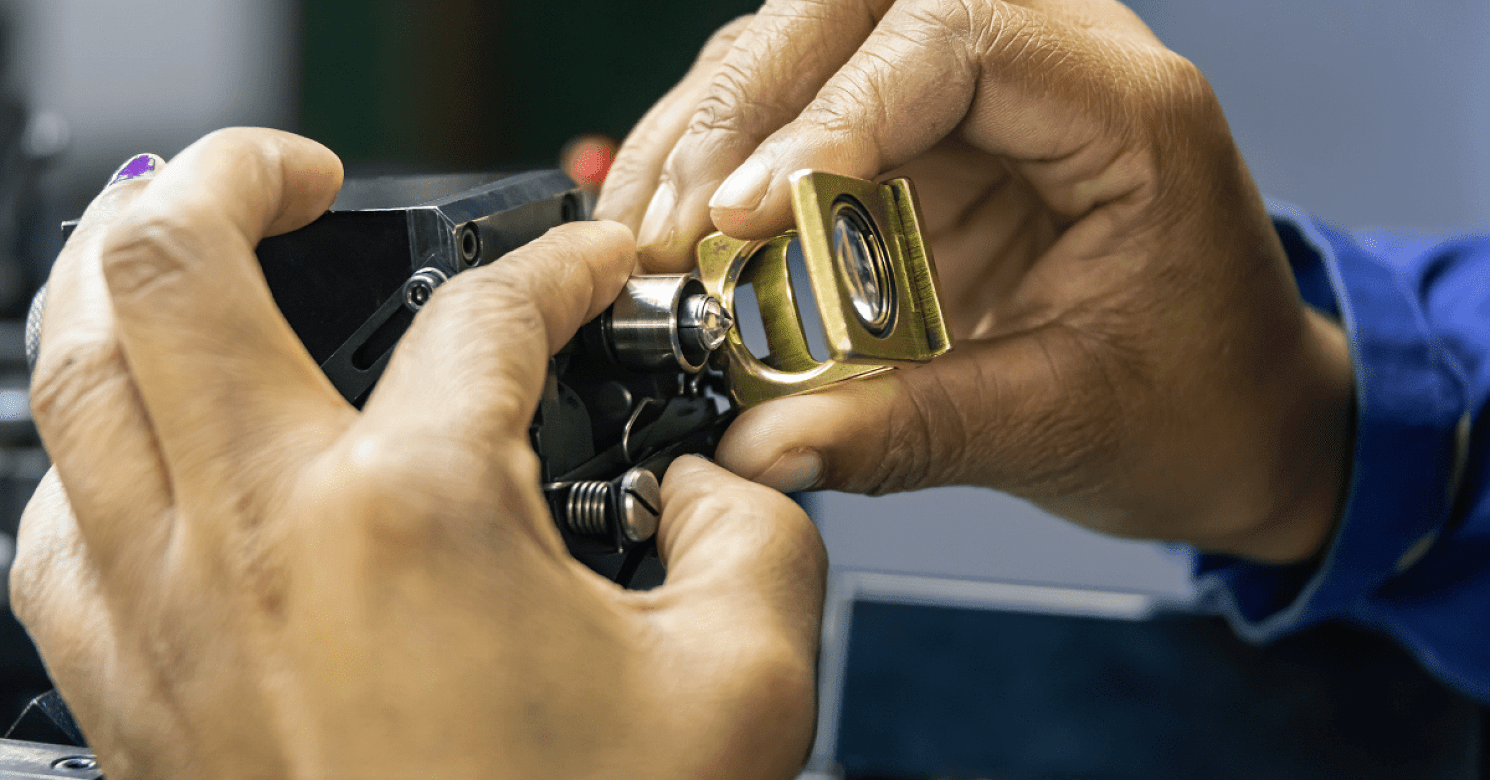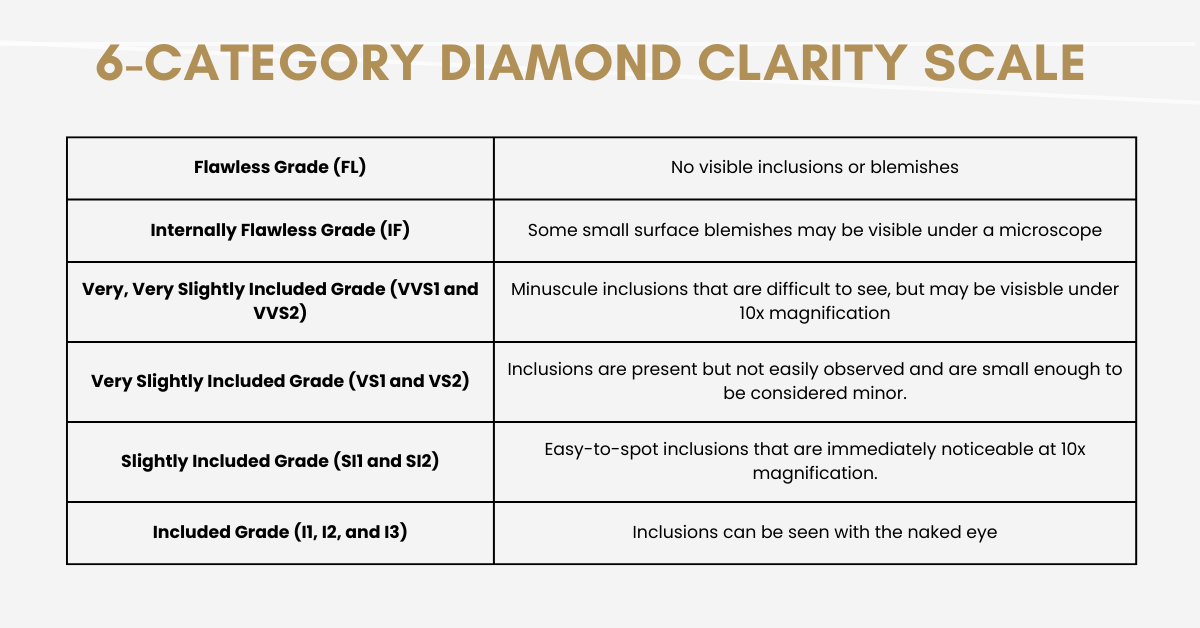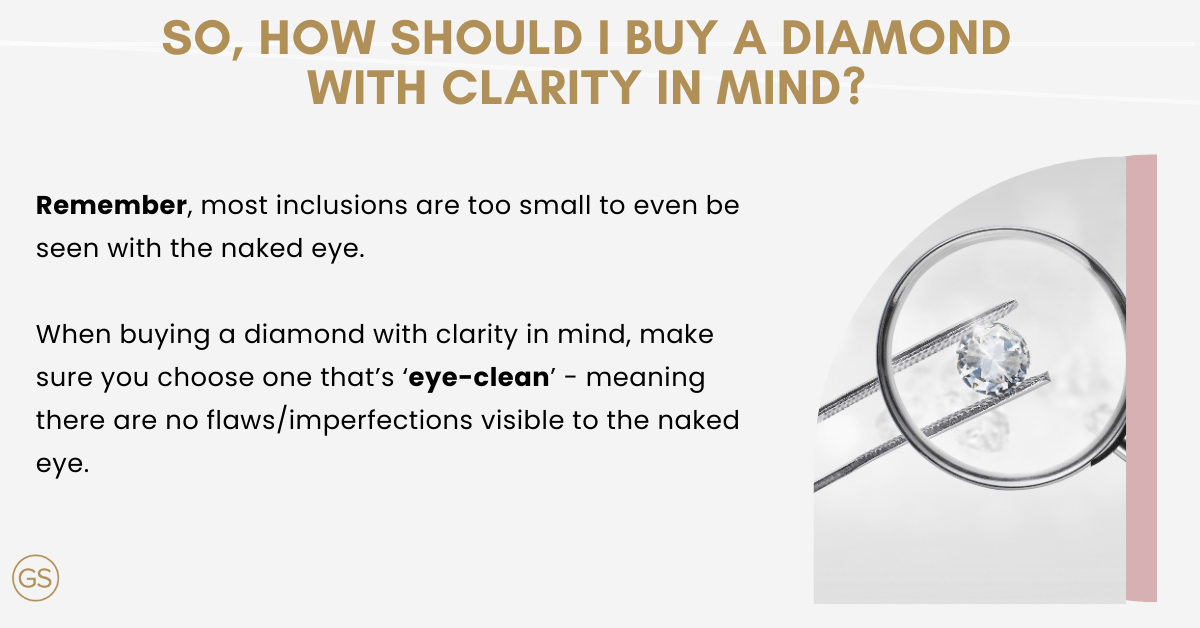
What is diamond clarity, and how does it affect the quality of a diamond?
When it comes to determining the quality of a diamond, the 4Cs are used as the international industry standard. Colour, clarity, cut and carat weight each have their own place in the grading of a diamond, but diamond clarity is usually the one term that eludes most people.
In our experience as diamond jewellers in Australia, the misunderstanding that many people have surrounding diamond clarity has led them to make overly expensive purchases, much more than they should, considering what they are looking for. We’re here to change that and provide you with a clear understanding of what diamond clarity is, how it affects the quality of diamonds, and, most importantly, how you can apply this knowledge to guide your search for the perfect diamond at the perfect price.
Table of Contents
Diamond clarity is one of four main grading factors for a diamond, specifically relating to the diamond’s internal and external structural characteristics.
When diamonds are formed naturally in the earth, they can sometimes end up with certain markings. Internal markings are called “inclusions”, while external markings are referred to as “blemishes”.
The position, size, and number of these markings affect the appearance of the diamond, resulting in a variation between stones. That said, most of these inclusions are so tiny that gem grading experts use a 10x magnification to observe these inclusions.

Clarity is measured using the GIA diamond clarity scale, developed by the Gemological Institute Of America, and is the international standard for diamond grading.
Most jewellers will use this grading system in their truncated form (VVS1, SI2, etc.) when referring to diamonds, even in online stores. Knowing the difference between each grade and subgrade can make a huge difference in how you buy your diamond.
The GIA diamond clarity chart measures clarity on a 6-category scale:
As a general rule, the fewer inclusions there are, the higher the clarity of the diamond.
High-clarity diamonds are considered to be of higher quality as they don’t have as many inclusions and blemishes that mar their appearance, and thus also fetch a higher selling price. Lower-clarity diamonds, on the other hand, come with imperfections that bring their value down, making them much cheaper to purchase.
As you may have already experienced at an in-person or online diamond store, the GIA diamond clarity scale isn’t the most customer-friendly way to inform buyers what they are really getting when buying a diamond. While diamond clarity matters significantly to diamond traders, what regular buyers usually want to know is whether the diamond’s value is worth what they are paying for and how beautiful it looks on them or a loved one.
Many diamond experts will emphasise the importance of understanding what diamond clarity is, but practically speaking, your diamond is not going to be looked at under a 10x microscope most of the time, if at all.
In fact, the inclusions present in a diamond can only be seen by the naked eye at much lower grades (SI1 and below), and even then, it will take a keen eye to spot them.

So, how should you buy a diamond with its clarity in mind? The key thing to remember is whether a diamond is “eye-clean”.
As mentioned before, most inclusions are too small to be seen by the naked eye and, therefore, don’t impact the appearance of a diamond in a meaningful way. A diamond is “eye-clean” if its inclusions cannot be seen without magnification.
When deciding between different diamonds, try asking if they are “eye-clean” instead of trying to split hairs between different clarity grades. Here’s an example:
Let’s say you’ve settled between two beautiful diamonds with similar cuts, colour, and carat weight — one with an IF clarity grade and the other with a VS1 clarity grade. If both diamonds are eye-clean, you may not be able to tell the difference between their shine and brilliance, but in terms of price, the IF clarity grade diamond will cost you thousands of dollars more.
What we’re trying to say here is diamond clarity is only as important as you want to make it. There is emotional and inherent value in buying a diamond that is as pure as it can be, but it is also practical to purchase a diamond that is less expensive yet still looks pristine and clear.
At the end of the day, the perfect diamond is one that looks and feels perfect to you — it’s a purchase with significant value, both financially and symbolically. Keep on doing your research, and always rely on a qualified diamond expert for reliable information.
Now that we’ve demystified what diamond clarity is, you can shop for your dream diamond with more confidence. Whether it’s an engagement ring or an anniversary gift, our experienced team at GS Diamonds can help you find the right stone for you or your loved ones.